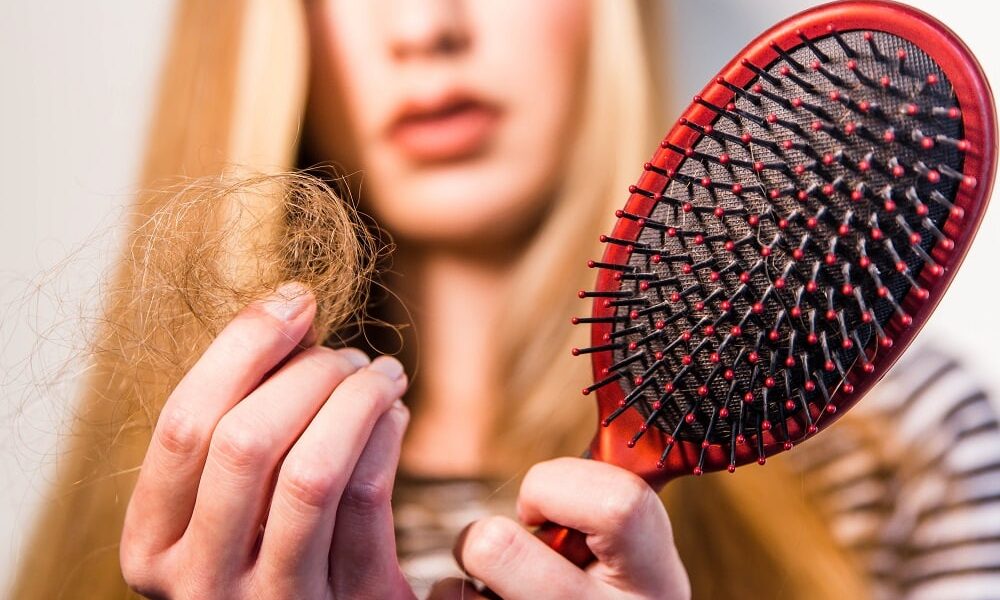
10 simple ways to prevent hair loss after bleaching – HairstyleCamp
Are you experiencing hair loss after bleaching? You do not have to. You can stop or reduce hair loss with a simple hair care routine.
In this article, we will go over what causes hair loss after bleaching and ten tips to help you prevent your bleached hair from breaking.
Why does bleach cause hair loss?
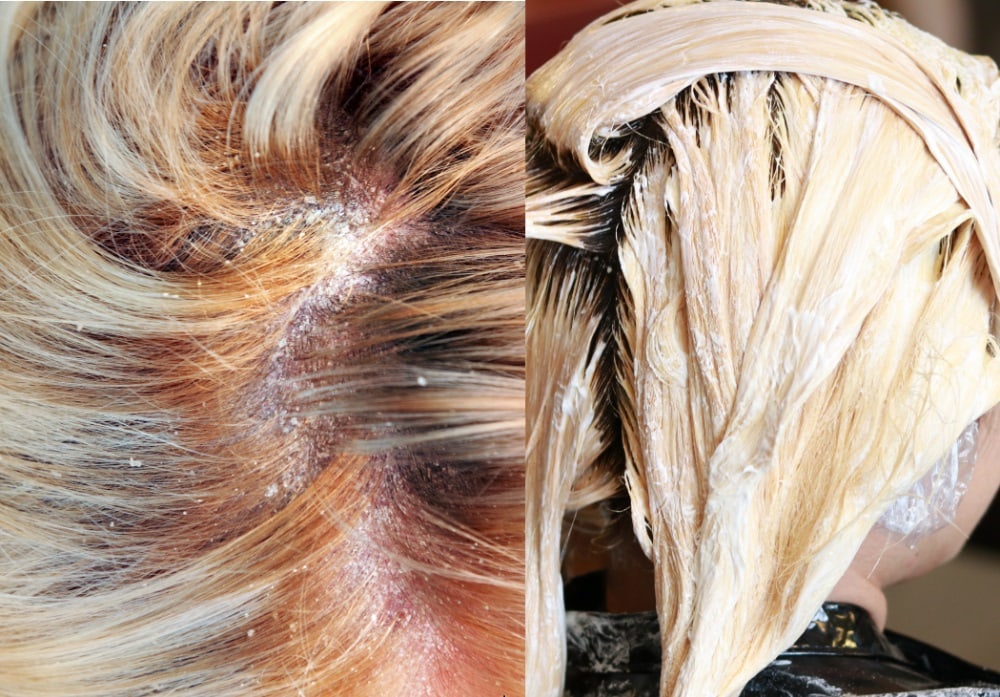
There are various reasons why bleaching can cause hair loss. Bleaching done correctly by a professional does not cause hair loss. But, dry and/or damaged hair will break after bleaching.
Improper care or lack of hair after hair bleaching will also lead to hair breakage and fall. Here are some common reasons for hair loss after bleaching:
Bleach hair treatments are difficult
Hair bleach is an alkaline chemical with a pH of 8 to 10. Your hair has a pH of 4 to 5. Hair bleaching treatments change the pH of your hair while it takes them to work. This process is difficult, especially when you bleach dark hair.
You may have an allergic reaction to bleach
Although rare, it is not impossible to have an allergic reaction to bleach. Bleach is a chemical like any other and different people react to it differently. Your scalp may have sensitivities or a full-blown allergic reaction. Sometimes the reaction is to a bleach mixture or a specific formulation.
Your bleach mixture may be too strong
The bleach mixture you or your hair colorist is using may be too strong. Trying to get quick results by using a strong mixture can lead to hair loss down the road. Bleach mixtures must be perfectly balanced to achieve excellent results without damaging the integrity of your hair.
Leaving bleach on for too long can cause hair damage
Leaving bleach on for longer can lead to better results. Your hair color is lifted, and it is easier to dye it. However, you can leave bleach on too long. This will cause hair breakage as the bleach will fry your hair. Due to the high pH of the bleach, the integrity of your hair is compromised, and your strands become weak and brittle.
Hair loss may indicate an underlying health condition
Sometimes it’s not the bleach that causes hair loss. Certain health conditions and nutrient deficiencies lead to hair loss.
Lack of iron, B vitamins, omega 3 fats and protein can lead to hair loss. Conditions such as alopecia areata also lead to hair loss. An immune system that is compromised as a result of covid, flu, pregnancy or other infections can lead to hair loss.
It could be because of your hair styling tools
Too much direct heat and over-manipulation of the hair leads to hair breakage. If you use heat to style your hair every day, you compromise the moisture balance in your hair strands. Fine-toothed combs and tight buns with elastics also cause hair breakage.
How to stop hair loss after bleaching
Do not despair if you notice hair loss after bleaching. You can fix the problem. It is not always an irreversible situation. Before you take scissors to your hair and cut it all off, here are ten things you can do to stop hair loss after bleaching:
1. Use shampoo without parabens
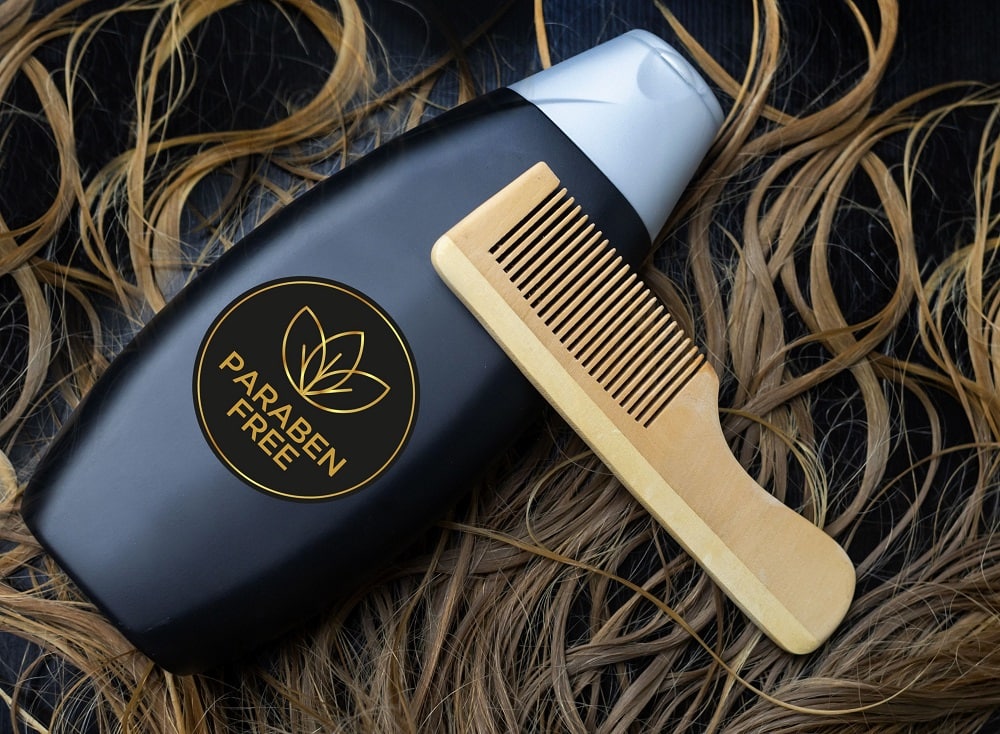
Parabens are one of the most researched preservatives for hair and skin care. They are unlikely to cause problems when used on healthy hair. However, using shampoo with parabens on damaged hair will cause additional damage. Parabens can dry out the hair and irritate the scalp. Using shampoo with parabens on damaged bleached hair will lead to hair loss.
Invest in a good shampoo without parabens and sulfates. Sulfates are strong detergents that lighten your hair. If used often they lead to dry and brittle hair. Stick to a paraben- and sulfate-free shampoo while your hair is recovering to avoid stripping it of moisture.
2. Wash your hair with cold water
Washing hair in cold water can help seal in moisture. Note that this only works on high porosity hair. With low porosity hair, cold water will make it harder for your hair to absorb moisture from leave-in conditioners and creams and lead to drier hair.
Using cold water as your last rinse can lead to shinier and more hydrated hair for those with high porosity hair. The cold water seals the hair cuticle, locking in moisture.
3. Air dry your hair instead of using heat styling tools
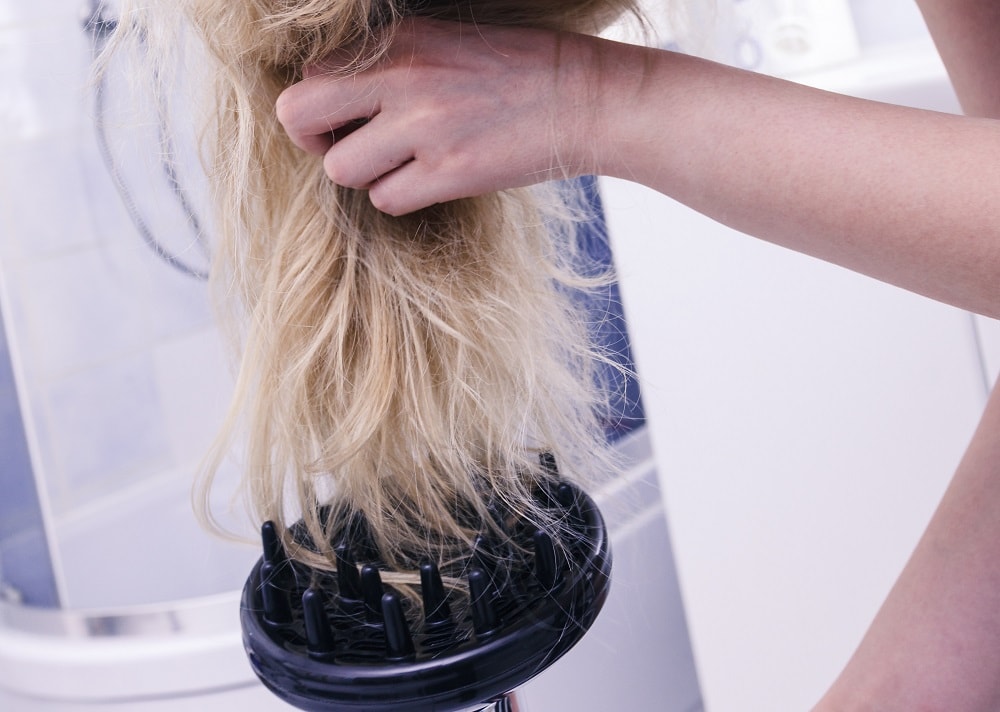
Direct heat on your hair can lead to breakage. Direct heat breaks down your hair’s hydrogen bonds and damages the strength of your hair strands. Air drying your hair is less damaging to the strands.
Remember that wet hair is brittle hair because water, like heat, restructures your hair’s hydrogen bonds. If your hair takes longer to dry, air drying up to 70% and using a dryer or diffuser on cool is the best way to dry hair without damage.
Limit the use of heat styling tools to once a month or less. You can choose roller sets, curls without heat, diffusion or blow drying with cooling and/or using a hooded dryer. Saturate your hair with a heat protectant if you need to use direct heat on your hair like a flat iron.
4. Use hair masks
Hair masks are loaded with hair-loving ingredients. They help to nourish, strengthen and moisturize the hair. You can choose protein-rich or protein-free hair masks depending on your hair porosity. Damaged bleached hair needs protein, as protein makes up 90% of our hair. However, low porosity hair does not thrive on too much protein.
Trial and error will help you know how often to use protein masks for your hair. Some people may need protein every week, while others can go up to 8 weeks without needing a protein hair mask. You can use a moisturizing hair mask between protein masks.
5. Nourish your hair with deep conditioning treatments
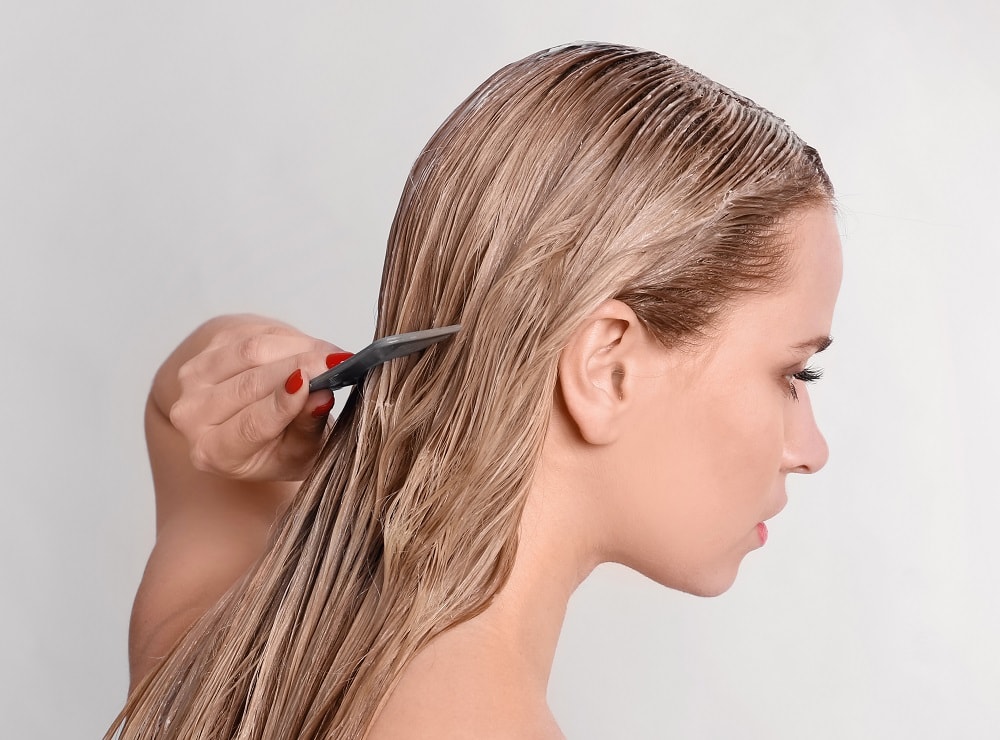
Deep conditioning treatments allow you to replenish the moisture lost from your hair strands. Hair loss is sometimes caused by dry and brittle hair. Nourishing your damaged bleached hair with weekly deep conditioning treatments helps restore moisture to your strands.
Some deep conditioning treatments contain proteins like keratin and can strengthen the hair as well. Don’t overdo it as protein overload or hygroscopic fatigue can lead to further damage. Observe how your hair reacts after each deep conditioning treatment and adjust accordingly.
6. Wash your hair with rice water
Rice water contains protein and can strengthen your hair strands. Washing your hair with rice water once a month or every two weeks adds protein to your hair strands. However, proceed with caution.
Rice water can lead to dry and brittle hair if overused. Those with low porosity hair should only use it once every few months. Try it once and see how your hair reacts.
7. Use coconut, rosemary, argan, almond or castor oil

Hair oil helps seal in moisture on your hair strands. Certain oils like coconut and rosemary can strengthen your hair. Use rosemary oil on your scalp to promote hair growth and on your lengths to strengthen it. You can dilute rosemary oil with a carrier oil such as almond, castor or coconut oil.
For those with low porosity hair, stick to sweet almond and argan oils. These do not prevent moisture absorption or weigh down your hair. Those with high porosity hair will see huge benefits to using coconut and castor oils as they lock in moisture and also strengthen.
8. Try not to wash your hair too often
Remember that wet hair is brittle hair, so try to avoid overwashing your hair. Too much shampoo and water can lead to dry, weak hair that breaks. While a clean scalp goes a long way in promoting hair growth, over-washing your hair can irritate your scalp and dry out your hair.
Wash your damaged bleached hair with half the usual amount. Focus on lightening the scalp and avoid overwashing the ends. Do a deep conditioning mask or hair treatment.
9. Protect your hair from the sun
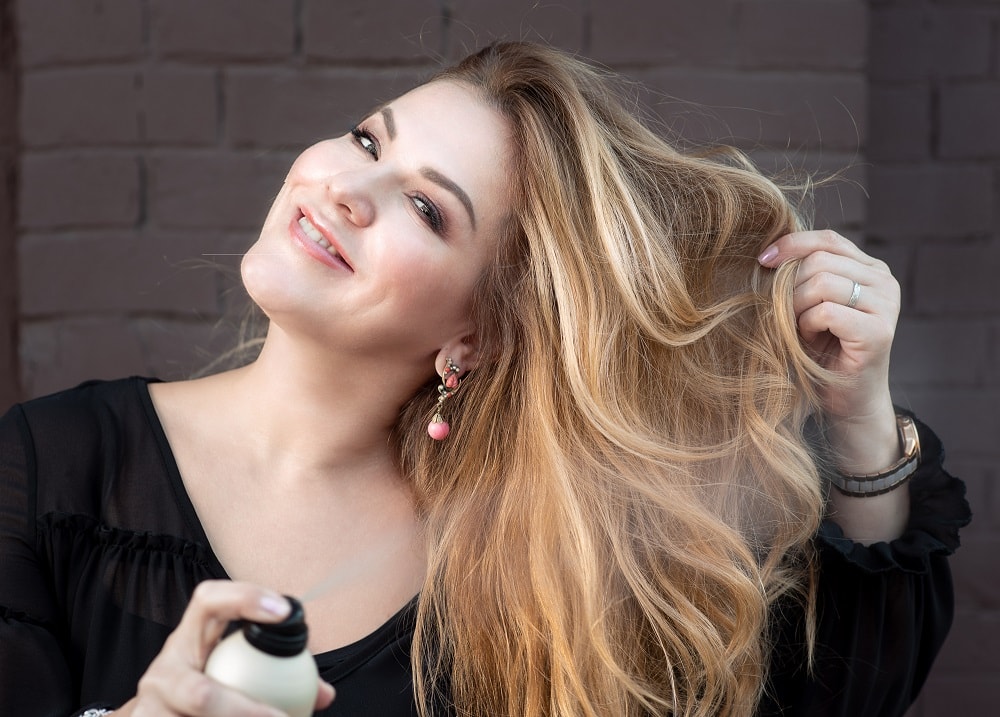
The sun damages both hair and skin. Damaged bleached hair is more sensitive to UV rays than healthy hair. Wearing hats and scarves can help protect your hair from the sun. You can also use SPF hair sprays, creams and oils to increase protection.
UV damage can irritate hair loss on damaged hair. Taking steps to keep your hair out of the sun will speed up its recovery.
10. Test the bleach on your section of hair
Before you commit to bleaching your hair, make sure you’ve researched the specific bleach mixture you’ll be using. Apply the bleach mixture to a small strand of hair and wait 24 to 48 hours to see how you react. Observe how your hair reacts and adjust the bleach mixture accordingly.
final thoughts
You can stop hair loss after bleaching by following the hair care regimen described above. Cutting your hair to deal with hair loss is not always the answer. Even virgin hair will break if you don’t practice good hair care. You can choose to trim occasionally as you apply the tips above to straighten your bleached hair loss.
Focus on being consistent and building a healthy hair care routine. You should notice less hair loss within three months. Be patient, your hair will recover in eight to twelve months.